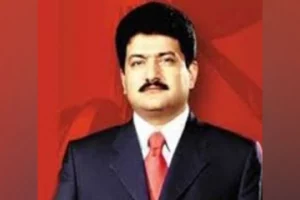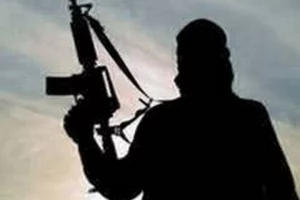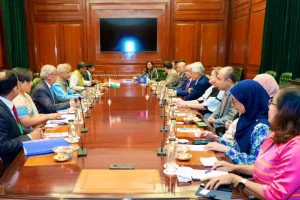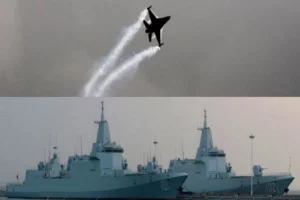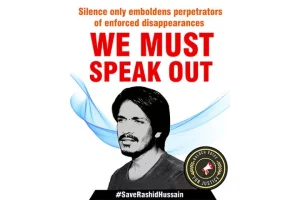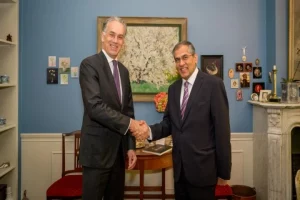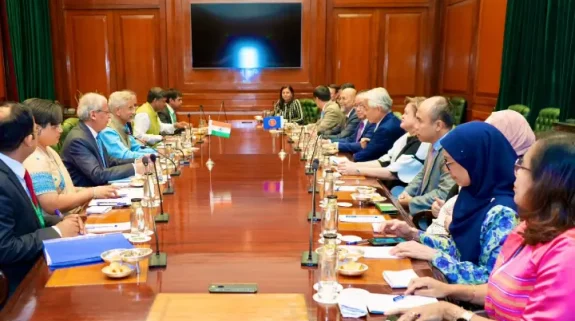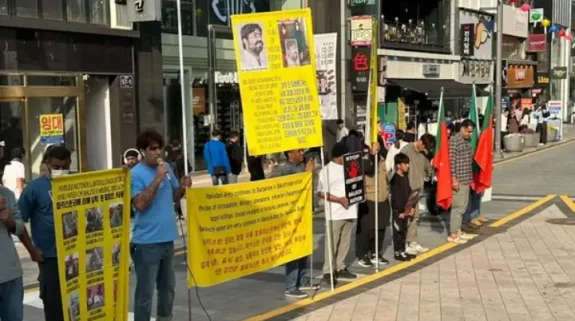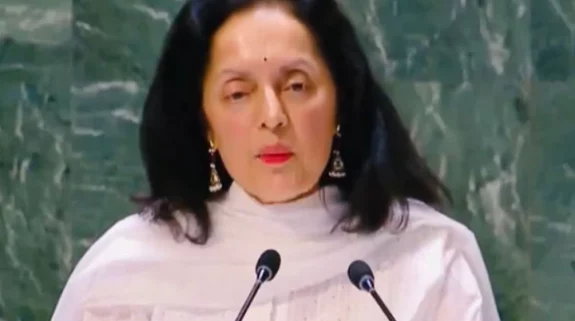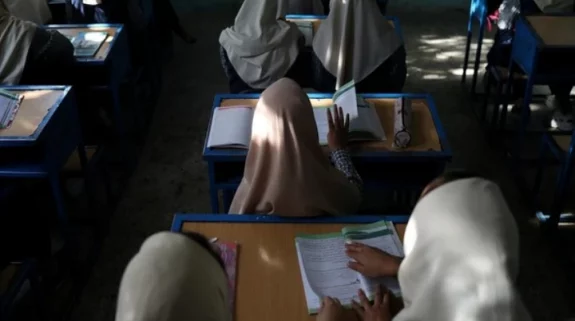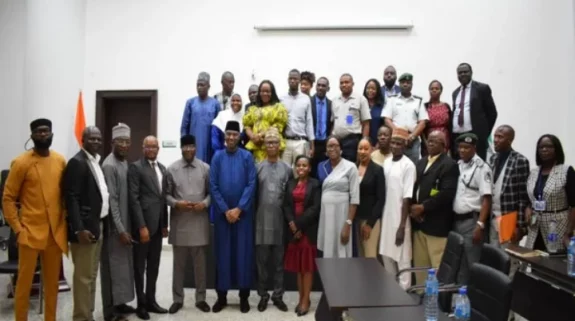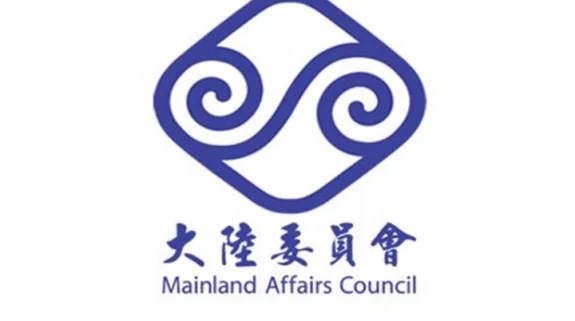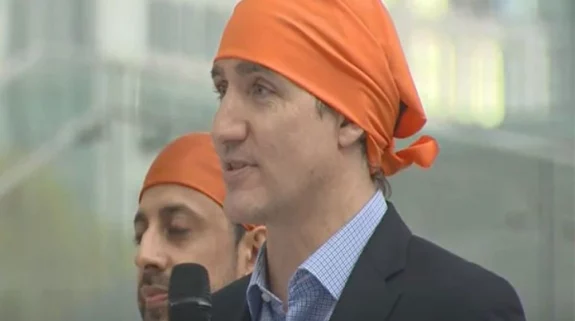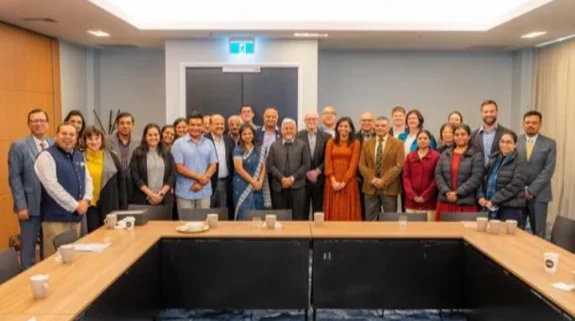For the first time after it was established in 1948, the University of Kashmir has installed the national flag at its Hazratbal campus in Srinagar on Friday, 12 March. With this unbelievable action, the University of Kashmir joined the country-wide ‘Azadi Ka Amrut Mahotsav’—the 75-week commemoration of India’s 75th year of Independence.
Unbelievable—because the university over decades has been a rendezvous of the separatist politics and ideology where professors have been gunned down on the campus and Vice Chancellors forced to lead the pro-azaadi demonstrations.
Also read: J&K fast-tracks Rs 28,400 crore Centre scheme to boost industry
Vice-Chancellor Prof. Talat Ahmad led the celebrations as chief guest while unfurling the Tricolour in the back drop of the national anthem. Faculty members and officers of the university administration attended the function as they paid floral tributes to the freedom fighters whose sacrifices and unflinching commitment and dedication made India realise its dream of independence in 1947.
The ceremony, held in line with the objectives of the ‘Azadi Ka Amrut Mahotsav’ celebrations, was attended by top administrative officers including Dean Academic Affairs, Dean Research, Dean College Development Council, Registrar, Controller of Examinations, Dean Students Welfare, besides Heads, Coordinators and Directors of various departments and centres of the main and the satellite campuses. They were linked to the proceedings of the main ‘Azadi Ka Amrut Mahotsav’ celebrations led by Prime Minister Narendra Modi through the virtual mode.
Talat Pervez Rohella, Commissioner-Secretary Higher Education and Prof Akbar Masood, Vice-Chancellor of Baba Ghulam Shah Badshah University Rajouri, were the guests of honour.
Lieutenant Governor Manoj Sinha led the “Azaadi Ka Amrut Mahotsav” celebrations in Jammu and Kashmir by visiting the village of Bagoona in Jammu’s Samba district, the birthplace of first recipient of Maha Vir Chakra, Brigadier Rajinder Singh, where he inaugurated the curtain-raiser event of the mega celebrations.
A grand Shikara rally of 100 small wooden boats, each decorated with the Tricolour, was taken out through the world-famous Dal Lake in Srinagar as part of the day’s celebrations. By coincidence it came on the auspicious festival of Meraj-un-Nabi when thousands of the Muslim devotees gather at Hazratbal, on the banks of the Dal Lake and close to the university campus, to participate in the special prayer sessions and to have a glimpse of Prophet Mohammad’s holy relic at the shrine.
In the valley’s pre-1990 era, a university clerk Ghulam Rasool Zehgeer launched Kashmir’s first guerrilla group, Al-Fatah, in 1969. On 2 January 1971, this group made an abortive attempt to loot cash from the Hazratbal branch of the Jammu and Kashmir Bank after a successful bank robbery in Pulwama. It happened just outside the university entrance.
Also read: Army connects with Kashmiris through Chinar Radio
In 1980s, Dr Ayub Thakur, a staunch Islamist ideologue and a professor, started his activities at the campus. Soon the university terminated his services. Later, he settled in Saudi Arabia and the UK and spearheaded a secessionist movement for Kashmir under his World Kashmir Freedom Movement.
Vice Chancellor Prof. Mushirul Haq, along with his Secretary Abdul Gani Zargar, was kidnapped in the beginning of the armed insurgency and breakdown of the civilian government, on 6 April 1990, by the Jammu and Kashmir Students Liberation Front, so-called students wing of the Jammu and Kashmir Liberation Front. Their bodies were found on 10 April.
Abdul Ahad Wani a professor of Law Department was kidnapped and shot dead on 31 December 1993. Later, a lady professor was also gunned down at her residential quarter on the campus.
While a professor of the Law Department got all six of his books released by the separatist hardliner Syed Ali Shah Geelani, a professor of the Persian Department occupied a senior position in the guerrilla group Jamiat-ul-Mujahideen and wrote and published Geelani’s biography.
Even as most of the departments at the University of Kashmir have steered clear of the political activism, quite a few have grown as the fountainheads of the ideology of separatism, particularly after the eruption of militancy in 1990.
On certain occasions, Chief Minister Farooq Abdullah, who acted as the university’s pro-chancellor, was silenced by faculty members, blaming him for “murder of innocent Kashmiris”. On one occasion, it happened in presence of the then Governor and Chancellor N.N. Vohra.
In 2013, group of the university students staged protests and clashed with the Police when the Bollywood producer-director Vishal Bhardwaj was permitted to a shoot a scene for his film ‘Haider’ at the campus. The students took objection to hoisting of the Indian national flag which was the requirement as the script. Bhardwaj’s crew was forced to withdraw and shift to a rural location.
Senior separatist leader Mirwaiz Umar Farooq, who completed his Bachelors, Masters and Doctorate in Islamic Studies from the University of Kashmir, refused to receive his degree and distinctions at the hands of the Vice President of India who was the chief guest at the annual convocation. Mirwaiz declared publicly that he would not receive his degrees from the Vice President of a country that, according to him, had occupied Jammu and Kashmir with her military might.
However, the situation has remarkably changed after August 2019 when the Centre read down Article 370 and 35-A, withdraw J&K’s Statehood and divided it into the two Union Territories of Jammu and Kashmir and Ladakh. Nineteen months after, the authorities have on Friday installed the first Indian national flag at the same campus.
However, the Tricolour still does not flutter at the campus of the Central University of Kashmir (CUK). According to the instructions of the Union Ministry of Human Resource Development and a resolution passed by the Vice Chancellors of the Central Universities in February 2016, all the 54 CUs across India are supposed to have the Indian national flag atop a 207-ft high mast.







